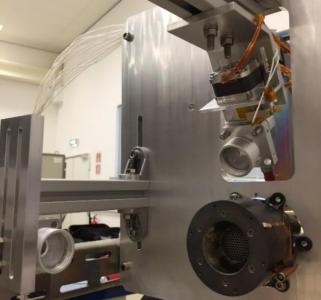De-risk assessment: ORBITA In-orbit diagnostics

The three main technical objectives of the activity were as follows: 1) Validation of thrusters in operation; 2) Feedback on high performance EP thrusters for fine-tuning; 3) Standardisation.
Current technologies for measuring the ion velocity of ion thrusters (and therefore their efficiency) are based on slow measurements that can take up to 8 hours against seconds for new technologies based on fluorescence, optical fibre spectrometry or laser spectroscopy. ORBITA aims to select and enhance one of these technologies to develop a diagnostic device capable of performing real-time measurements of thruster plumes.
Benefits: 1) A highly compact system that is easy to integrate at EP test facilities with the thruster and associated subsystems; 2) Perform measurements on thruster plumes non-invasively; 3) Flexibility to provide customers with both thruster performance indicators and spacecraft interaction effects.
